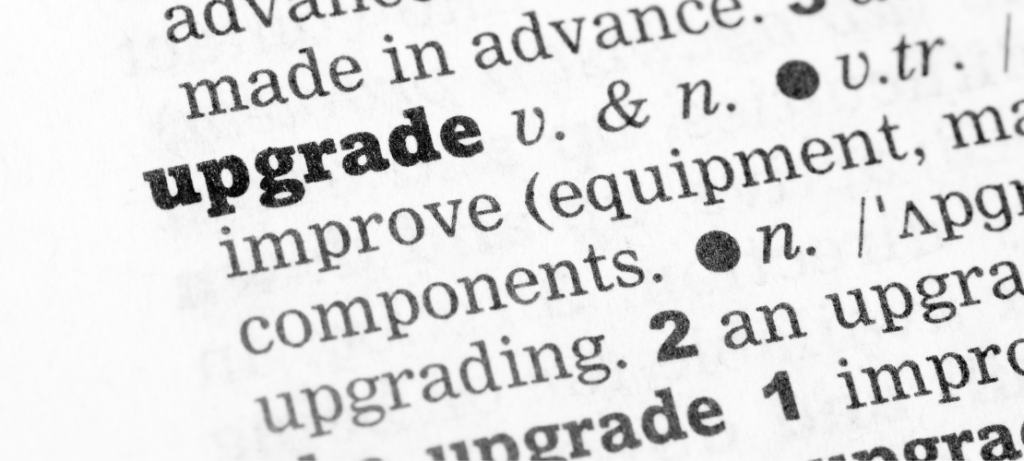Your communication system is your company’s central nervous system. It’s responsible for sending messages that get the right people to the right place at exactly the right time. You depend on it working seamlessly.
When communication suffers, everything suffers. Critical communications are missed. Precious time is wasted. Preventable errors are made. Customer and employee satisfaction plummets.
Upgrading a communication system can be a long process and you need to know the right time to make the upgrade. Having a trusted technology partner, with decades of experience in successful project management, to expertly lead your team through the upgrade is paramount.
You can start the upgrade process by taking an honest, critical look at your current communication weaknesses. Below are signs your communication system needs an upgrade:
- Your on-call schedule is still printed on paper and kept in binders. It isn’t accessible to anyone without calling in.
- You can’t reach the employees you need right away without a series of back and forth pages and phone calls.
- Your operators are overwhelmed by the number of calls they receive.
- Data entry takes up your staff’s valuable time, especially when it needs to be duplicated in different systems. Important information still lives on colorful post-it notes.
- Callers complain about long hold times or complicated phone directory systems.
- Your automated system doesn’t integrate with another systems.
- Your automated system has gone down one too many times and you don’t receive the immediate support you need any time of day or night.
- Your current system, whether it’s antiquated or not automated, is too costly. It holds you back from growth.
Only you and your team will know how much longer you can sustain these challenges caused by an outdated or inflexible communications system. When you’ve decided it’s time to upgrade, follow these helpful guidelines of what to look for in your call center communications system:
- Ease of use and customization.
- Customizable scripting protocols that can be updated instantaneously to give callers accurate information and to save time.
- Intuitive interface and user experience to reduce new operator training time.
- Interoperability. Your upgraded system should be able to integrate with other systems, if needed.
- Reliability. Telephone outages, power outages, and natural disasters can happen suddenly and unexpectedly – taking down communications. However, communications failure is not an option. Make sure your provider has a hosted Emergency Access Service to backup your communications system at a secure, geographically separated location.
- Data security and compliance. Be sure your technology partner is following all required compliance rules and has several contingency plans for data security. Know the pros and cons of cloud storage, on-premises data storage, and other managed cloud storage solutions.
- Customer service. Your vendor should support you as ardently after the sale as they did when they wanted to win your contract. Ask your prospective vendor about their customer support. You may discover some will ultimatums to pay for costly upgrades or increase their service support agreement. Others will assign you with a trouble ticket number and leave you in a queue until it’s your turn. Ask about their first contact resolution (FCR) rate to discover what percentage of their customers have an issue resolved before they hang up the phone.
When you’ve decided it’s time to upgrade, prepare your staff and equipment for a smooth transition with these 5 steps for a successful implementation:
- Get staff buy-in early on. While some of your staff may be itching to upgrade systems, others are probably not as excited to learn a new technology. Explain the benefits of the upgrade and how it will improve their experience at work. Ask your technology partner for references from other customers to learn how other hospital systems overcame obstacles to implementation.
- Make sure your IT is ready to go. Verify that your telephony or telecom vendor has all the necessary interfaces in place. If you’re moving from a paper-dominated system, have enough computers on site that are capable and ready to run the new software.
- Prepare files for import. Ask your vendor for templates to follow so that your data can be mapped correctly to your new system.
- Schedule an 8-week transition period. An integrated communication system isn’t a plug-and-play experience. Many behind-the-scenes pieces are at work to connect the old data with the new system.
- Assure your staff they will have thorough training with experienced customer engineers and implementation specialists. On-site training of each department can take up to 4 weeks total. Ask your vendor about support after the on-site training has concluded.
The way your communication system operates internally and externally is vital to the health of your company. Choose a partner who is with you throughout the whole process, and who has the experience to anticipate any bumps along the way. Contact us if you think your communication software system needs to be upgraded. We can give you a comprehensive audit of your system, recommendations, a plan, and a timeline.





